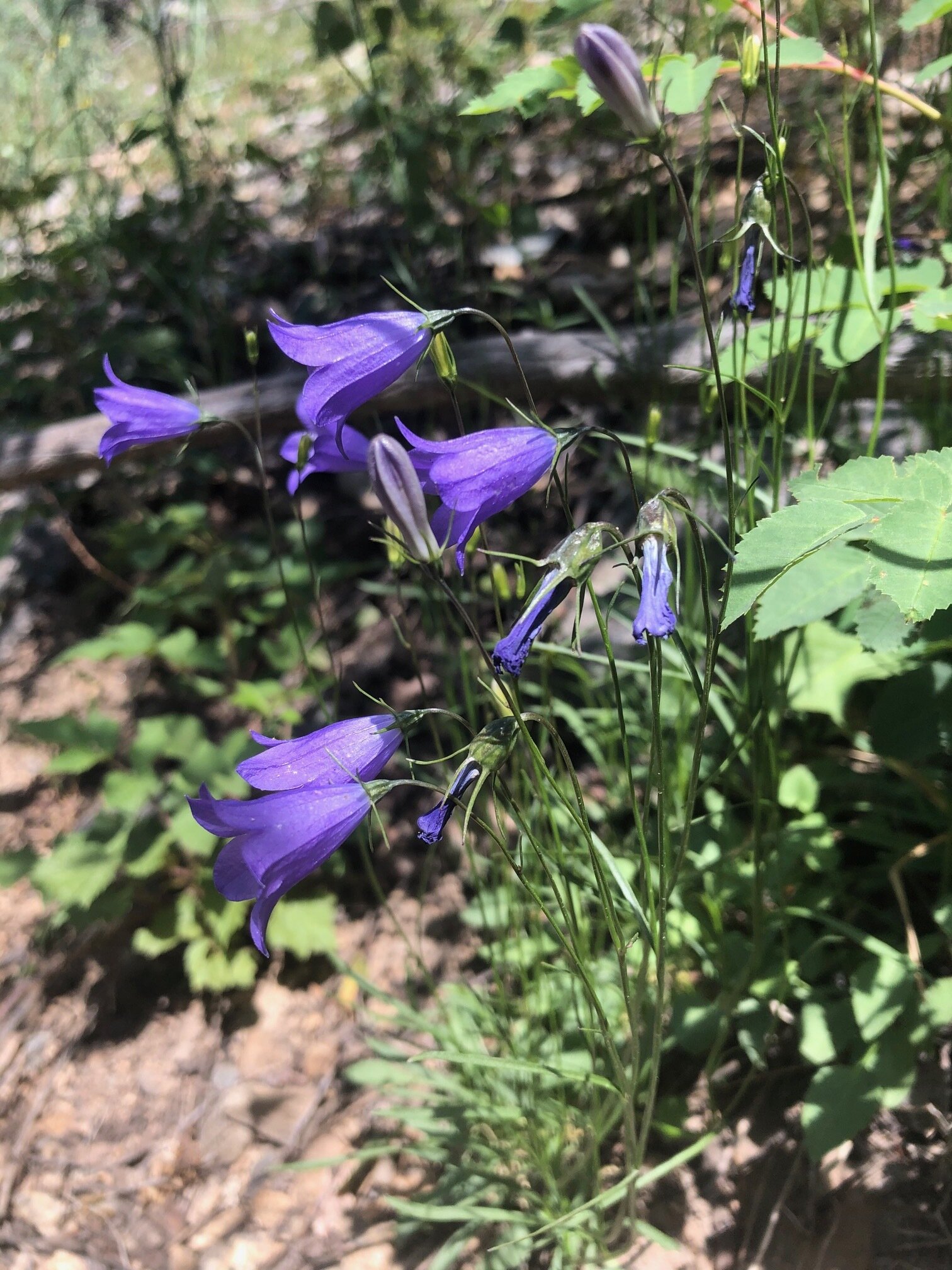Common & scientific name
Sickletop lousewort, Pedicularis racemosa
Family
Broomrape, Orobanchaceae
Location
Lower Lost Man trail, 10,400’
Fun, weird, helpful, or little known fact
Look for this wonderfully-shaped wildflower en masse under spruce and fir trees in the subalpine zone. From the US Forest Service’s wonderful “Plant of the Week” post:
“Traditionally, Pedicularis has been included in the figwort family (Scrophulariaceae). Louseworts have green leaves and produce their own food through photosynthesis but also have roots capable of capturing nutrients and water from adjacent plants, making them partially parasitic. Recent genetic studies have shown that Pedicularis and other hemiparasitic genera in the Scrophulariaceae (including the Indian paintbrushes, Castilleja) are better placed in the broomrape family (Orobanchaceae), with species that are true parasites that lack green chlorophyll.
Another recent discovery implicates Leafy [Sickletop] lousewort as an alternate host for White pine blister rust. An introduced fungus called Cronartium ribicola causes this infectious disease of five-needled pines [including Limber and Bristlecone pines]. . . . It remains unknown whether Leafy [Sickletop] lousewort has served as an alternate host for blister rust for decades, or if this relationship has evolved only recently.”




























